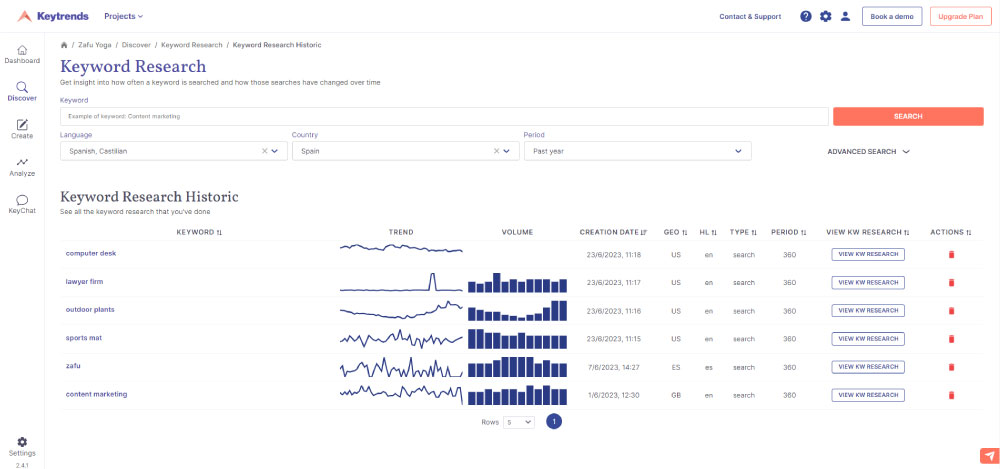SEO Entities & keyword research tool
Research keywords and SEO entities in one tool
Do your keyword research faster and with more data: our tool is the most complete tool because it extracts keyword and SEO entity data from more than 10 different sources
All the data you would get using several tools, in one tool
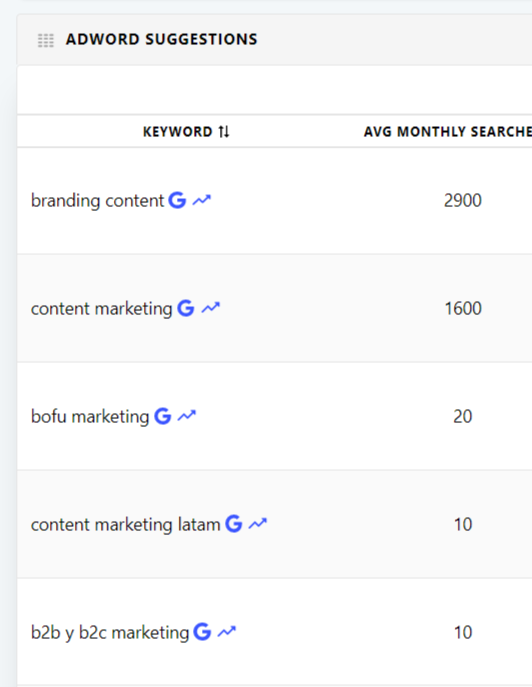
We unify the data from more than 10 tools, in one
We give you what none: the SEO entities. We supplement them with those from Google Trends and other sources to give you data updated to the current month
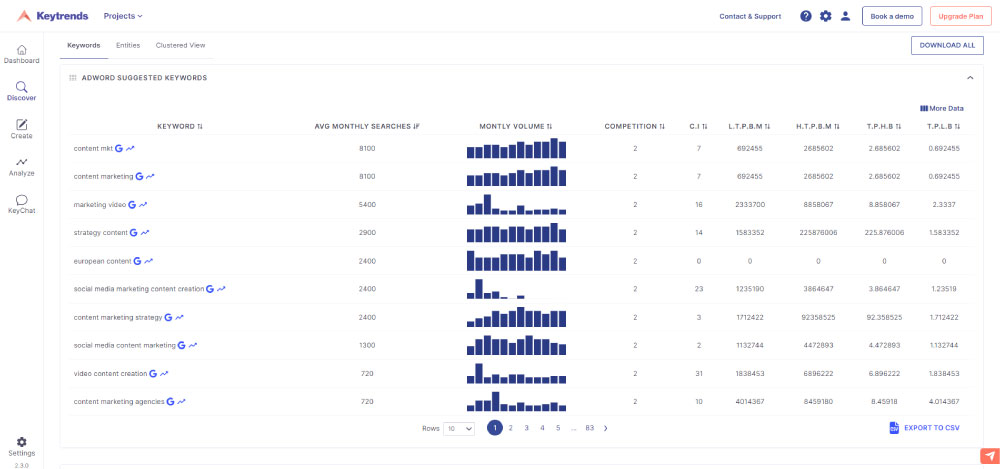
Keyword suggestions
The results of Ads keywords with all their data: volume, competitiveness, CPC and the rest of the indicators
Searches without competence
New words, trends and related queries from Google Trends without having to open the tool
SEO entities for semantics
Terms and words related to your keyword or subject to enrich the content and increase its positioning thanks to Semantic SEO
All automatically and without the use of other search tools
All types of user queries together, no limitations or extra fees
Stop relying on multiple tools to extract user queries: in your keyword research you will have all types of Google searches for your keyword, without limit or extra cost.
- Suggested Google searches by letter, alphabetical order and preposition
- Related queries: what users also search for, including synonyms for the seed keyword
- Google PAA: user questions in the search engine

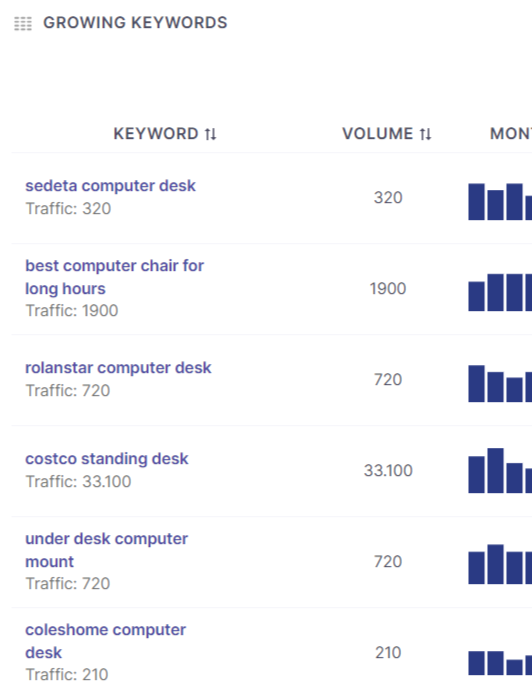
Trends for your keyword, selected selected and sorted by growth
A keyword tool that includes Trends’ growing or trending queries in its results? We select the most relevant ones for your search and rank them according to their growth:
- Top keywords: the ones that have grown the most over time
- Growing keywords: keywords with different peaks of popularity where they have become trending
- You will be able to visualise the estimated traffic and volume of interest on an average and month-by-month basis to determine possible seasonality

The only tool with entity research
Do what very few know: work the semantics of content with SEO entities to rank better.
- We use algorithms for entity extraction (NER) and natural language processing (NLP), such as the Knowledge Graph
- Search for a keyword and we will give you the SEO entities (words and topics related to your theme), as well as the related Google PAA
- We tell you which ones are most relevant to Top Stories and increase your chances of being featured
Automatically group your keywords into clusters
View all keyword results, trends and Trends queries in topic groups by clicking on the Clustered view tab. No extensions, no scripts, no additional tools.
- Visual tagging of the keyword’s source of origin
- Access Google results and Google Trends data in one click
- Visualise the positioning data of the contents already created for the keywords
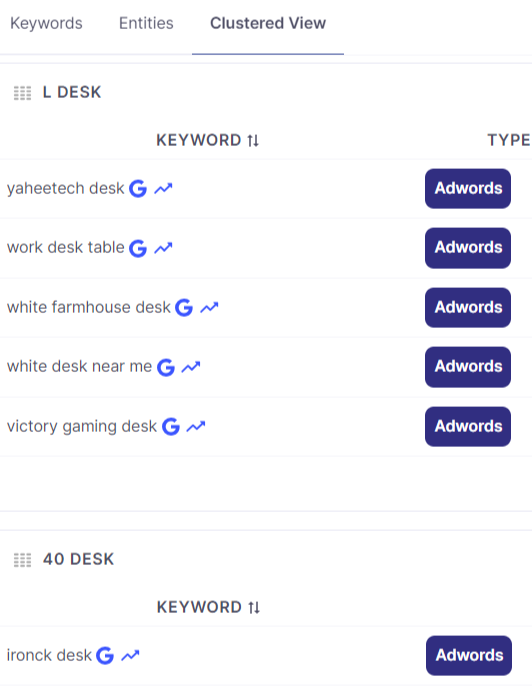
Do you want to learn how to use your keyword research data?
View your research history and download CSV reports
Need to retrieve old keyword and entity research? With Keytrends you can do it. You can also download all the data in a .csv document.
